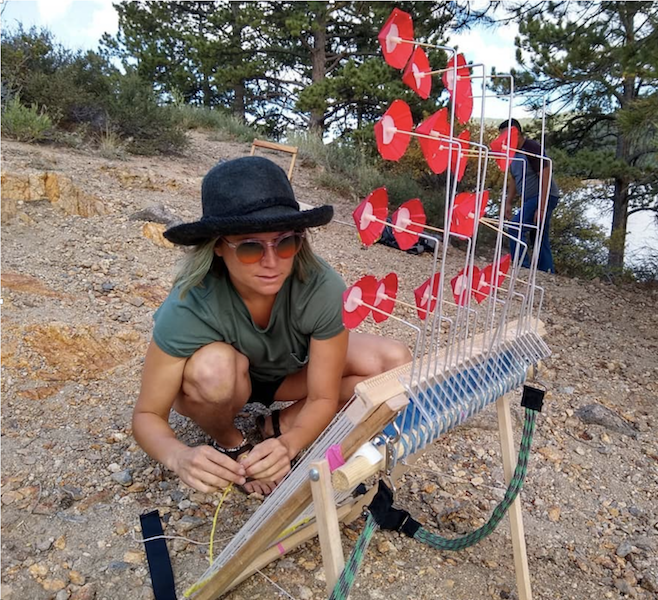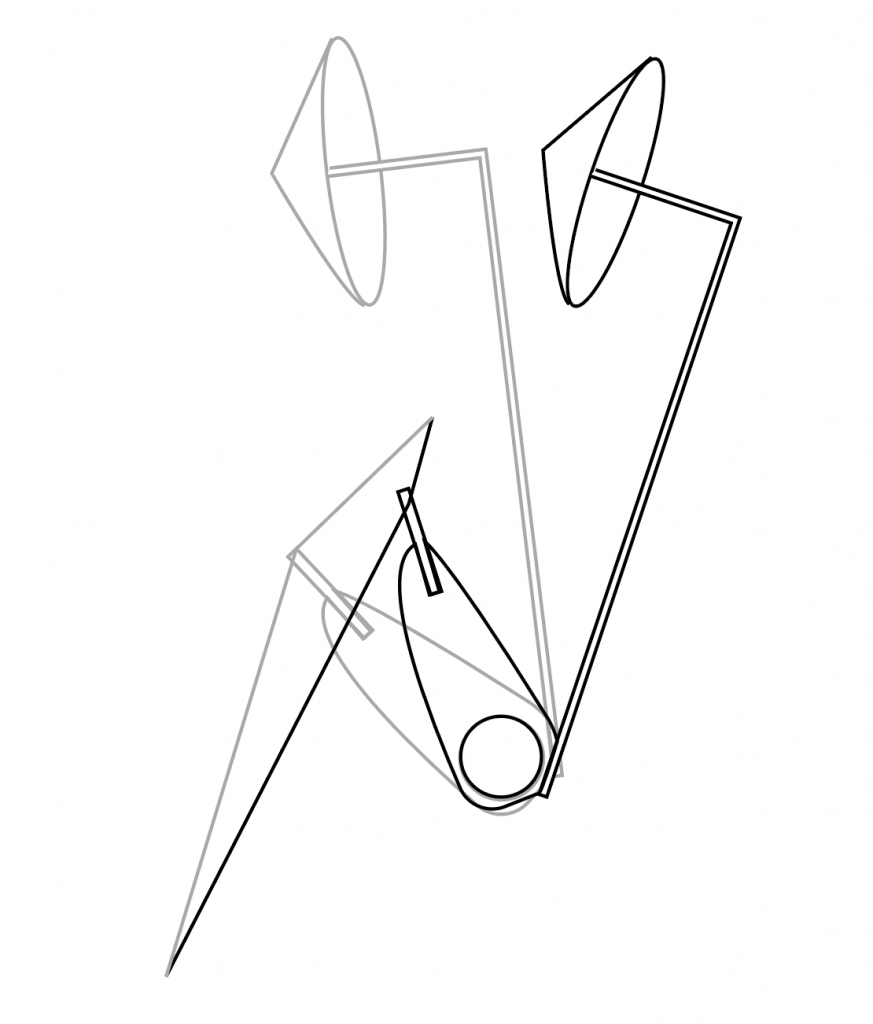E-Textiles, Smart Textiles, Flexible Hybrid Electronics: Who’s Saying What?
Recently, LOOMIA and the Unstable Design Lab jointly ran a survey that asked people working in e-textiles (or more broadly, “electronics + textiles”) how they liked to talk about their work. LOOMIA is a flexible electronics start-up creating prototyping components for creative technologists, designers, and all sorts of e-textiles folks, hence the interest in how we label e-textiles and related work. LOOMIA has posted on their blog about the differences and overlaps between terms like “e-textiles”, “smart textiles”, and “functional fabrics”, but we wanted to test some theories about how people are actually using these terms.
The survey asked people to think about the following terms:
- E-textiles
- Smart textiles
- Functional fabrics
- Soft circuits
- Flexible circuits/devices
- FHE (Flexible Hybrid Electronics)
- Stretchable electronics
Participants were asked which terms they had heard of, if they preferred or disliked any on the list, and if they saw any differences between the terms. They could also add any terms that we had missed.
We received a wide variety of responses, representing a range of age, genders, nationalities, experience levels, and professional backgrounds!
Demographics
Total Participants – 63
0 years of e-textile experience – 21
1+ years of e-Textile experience – 42
Gender – Female (28), Male (33), Non-Binary (2)
Age – 18 to 75
Occupation – Homemaker to CEO
In particular, the terms “e-textiles” and “flexible hybrid electronics” seemed to stand at two extremes of a language spectrum.
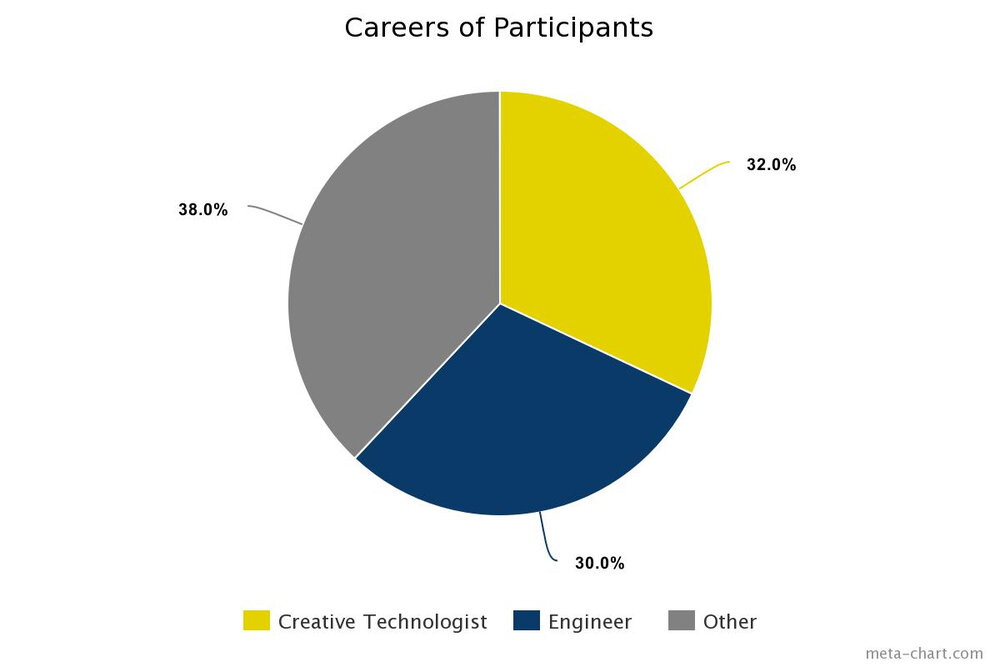
Findings
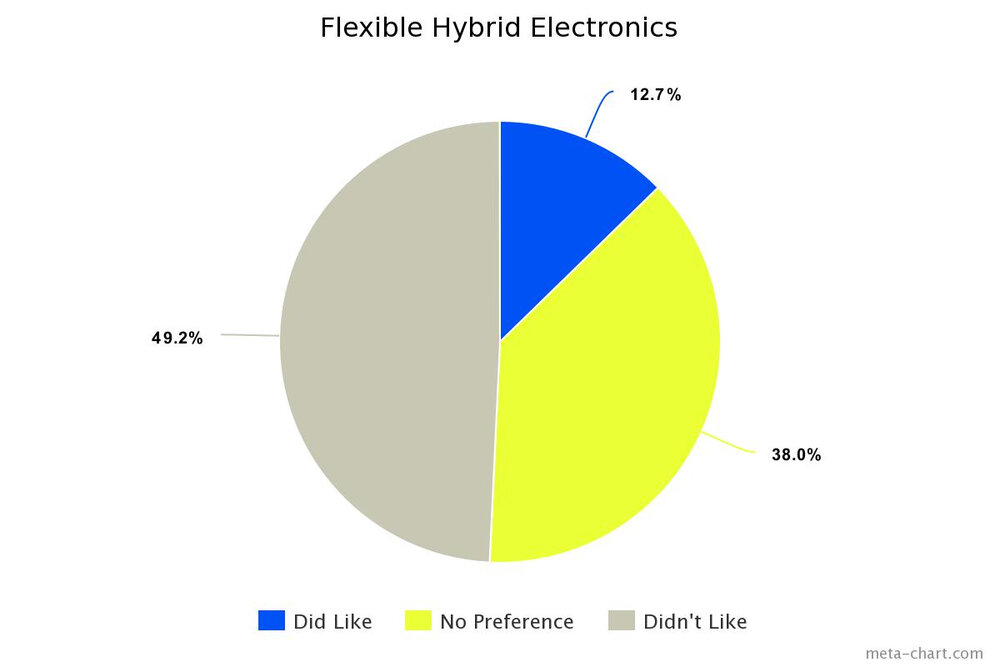
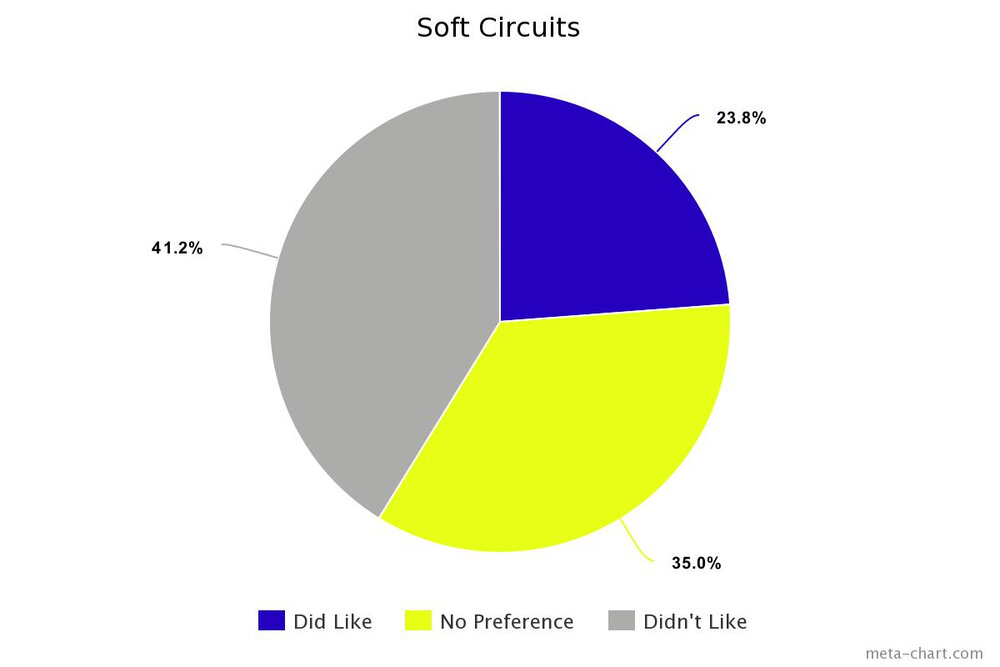
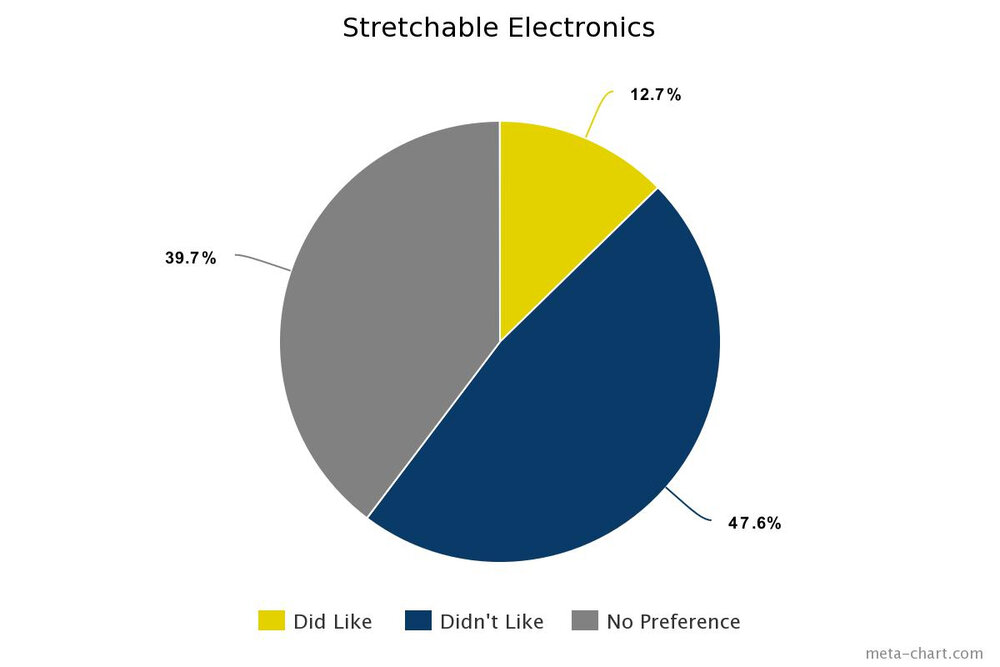
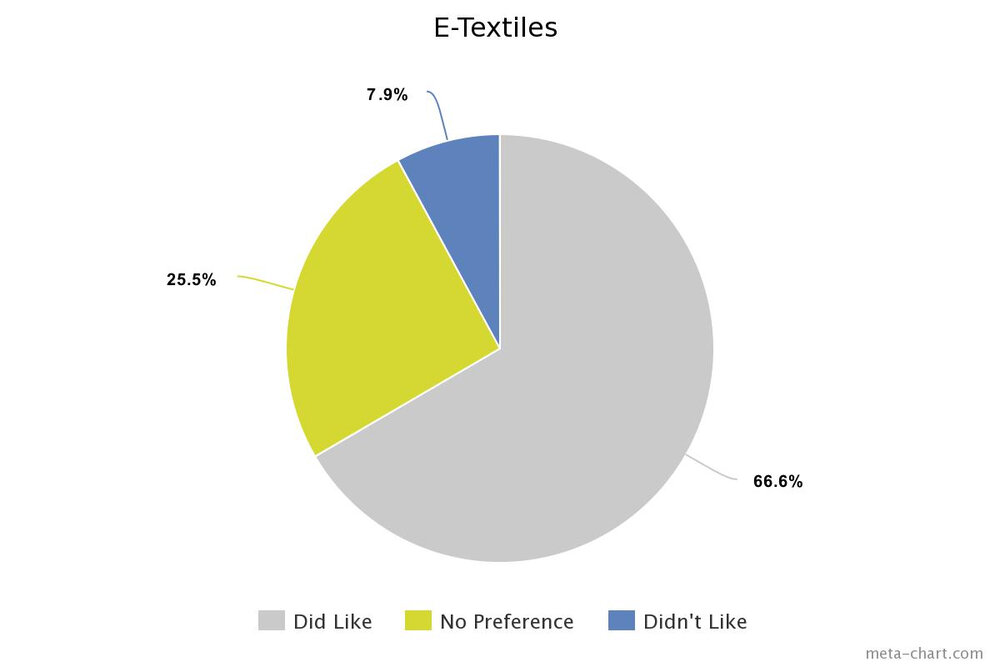
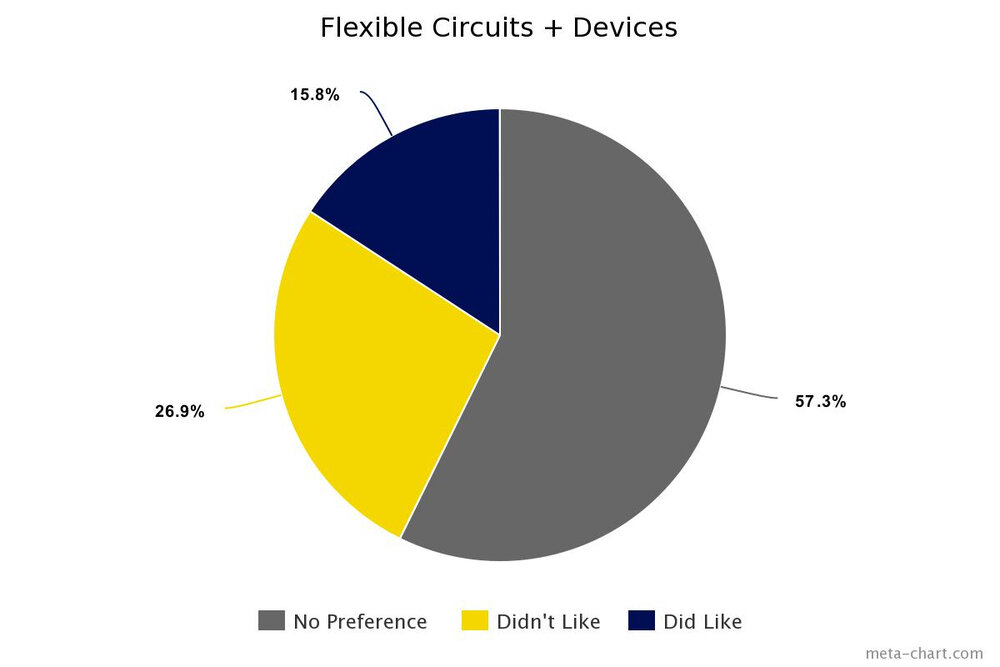
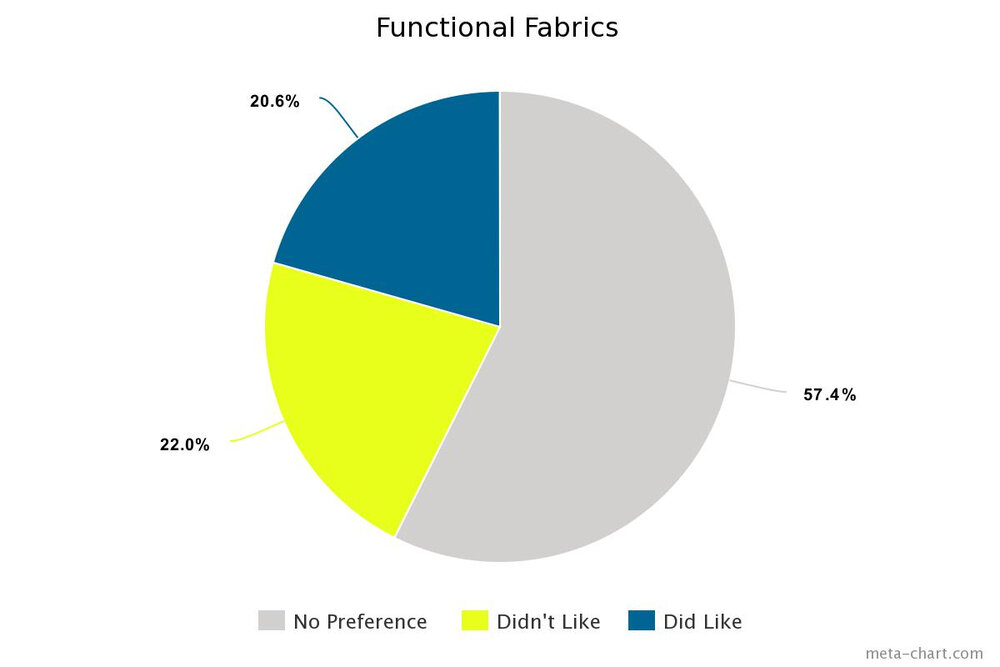
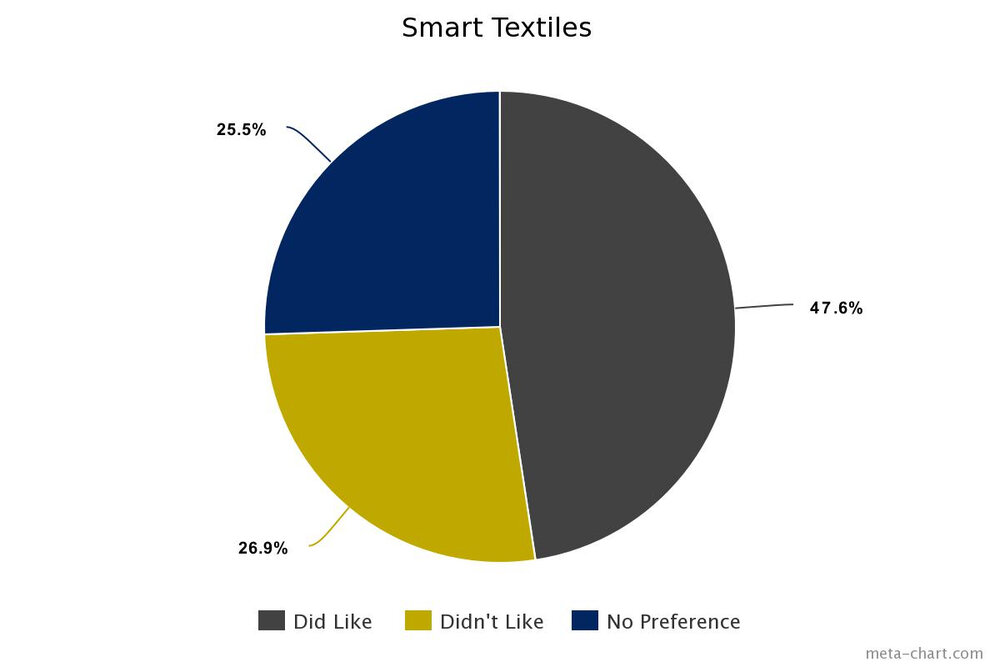
- 30/63 did not like Stretchable Electronics
- 26/63 did not like Soft Circuits
- 31/63 did not like Flexible Hybrid Electronics
- 17/63 did not like Flexible Circuits and Devices
- 14/63 did not like Functional Fabrics
- 17/63 did not like Smart Textiles
- 5/63 did not like E-Textiles
Because we also collected demographic information on participants’ career paths and asked them to categorize their own work, we wanted to see if there were any differences between the disciplines represented in our field. The main categories were “engineer”, “creative technologist”, or “artist/craftsperson”, but participants also added “venture capital”, “HR”, “textile designer”, and other roles.
What Engineers Liked
- 7/19 liked E-textiles/Smart Textiles (tied)
- 3/19 liked Flexible Hybrid Electronics
- 2/19 liked Soft Circuits
What Creative Technologists Liked
- 18/20 liked E-Textiles
- 10/20 liked Smart Textiles
- 7/20 liked Soft Circuits
- 5/20 liked Functional Fabrics
- 2/20 liked Flexible Hybrid Electronics
What Other Careers Liked
- 8/24 liked Smart Textiles
- 7/24 liked E-Textiles
- 2/24 liked Stretchable Electronics
- 1/24 liked Soft Circuits
Digging deeper into our data, many participants generously gave time to answer some free-response questions on their language associations with “e-textiles” or “flexible hybrid electronics”. By and large, people were concerned about future e-textiles/flexible device products being washable, both as an essential criteria for usability and as a technical challenge to overcome with new materials.
Language Associations
Q: What do you believe are essential features or descriptors of future e-textiles/flexible electronics? (For example: thin, washable, soft, etc.)
Q: What sort of products do you associate with flexible or wearable devices? These can be existing products or future hopes.
We also see some interesting disagreements about how much the “e-textiles / smart fabrics” label overlapped with the “flexible / wearable” label. While most people said that they’re either related or even nested categories, a minority of respondents associated the two with different materials or fabrication techniques. A key quote from a dissenting opinion:
“fabrics are made of fibers that can easily be manipulated whereas flexible and wearable devices are made of plastics or hard materials”
anonymous survey respondent
which points out that many of our current wearable devices like smartwatches don’t use fabrics (or if they do, there aren’t integrated electronics in the fabric).
Conclusion
Returning to our initial hypothesis, it seems that our hunch was wrong about engineers preferring terms with “circuits” or “electronics” over terms that focused on “textiles”! But the data shows a much more nuanced picture of how people are thinking about the future of e-textile technologies. We see folks grappling with using language that is specific and descriptive (e.g. “electronics” implies semiconductor devices and the associated materials and processes, while “textiles” implies yarns/fiber and knitting/weaving/felting/etc.) versus language that is general and accessible. Broad terms like “e-textiles” and putting the “smart” label before a product category are easily understood by a general audience, but for those working within the industry, these terms can become “buzzwords” which are vague and unhelpful for describing the technical details of their work.
We presented these initial findings and analyses in a webinar, hosting a town-hall-style discussion with interested survey respondents. Again, there was a diverse range of experiences in the virtual room. Speaking face to face, we wanted to get the room thinking about their language use when talking to others in e-textiles. Since the survey focused on people’s language use within their own professional contexts, we were especially interested in any experiences that people had collaborating across disciplines when working in e-textiles. From one participant on the differences in working with textile engineers vs. electrical engineers:
“textile engineers tend to have a broader perspective as they can see concrete applications (wearables / clothing). Whereas [electrical engineers] may be a little more broad technically: e.g. use of flexible circuits in detecting stretch.”
anonymous webinar attendee
While our dataset is by no means comprehensive, these survey results were a fascinating exploratory poke into the interdisciplinary nature of the emerging e-textiles field and the future of its industry. We hope that sharing these findings will help us all to speak across professions and consider different perspectives, particularly in collaborative settings, when discussing soft, flexible, and textile based circuits of all shapes and sizes.
We’d like to shout out the following people for their contributions and thoughtful responses:
- Ricardo O’Nascimento
- Andrea C
- Robert Tietze
- Vicente Jorge Sanchis Rico
- J.J.M Geurts
- Michelle Farrington
- Jim Stathis
- Lina Stephens
- Radoslav Hanic
- Charlie Lindahl
- Amy Jenkins
- Darryl
- Md Mehdi Hasan
- Qianwen Yu
- Lori Ann Wahl
- Michael Stewart
- @cooolrunnings
- Pranav Sai
- James Ochieng
- Eddie Yam (Intertek HK)
- Gil M
- Muhammed Tawhidur Rahman
- Bobby Bedi
Collaboration
If you’d like to learn more about LOOMIA’s side of this collaboration, please check out their website and blog (where this article was also posted). You can also learn more about their founder and our main collaborator on this study, Maddy Maxey.
Data analysis by Maddy Maxey
Images by Mary Vogt
